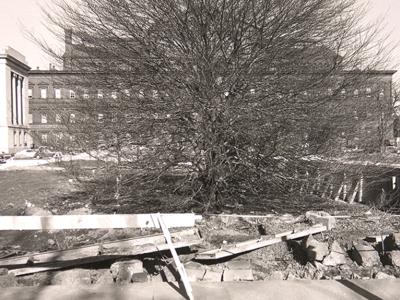Looking Back: Photography in the '70s
In the late Seventies, when the Washington Art Consortium Collection of Photography 1970-1980 was conceived, there was a shift beginning to occur within the medium of photography. Traditional photography, since its invention in 1839, was really—at its core—about framing the world. Initially the focus was documentation; later in the early 20th Century with artists like Alfred Stieglitz, Paul Strand, Edward Weston, and Walker Evans this tradition became often more self-consciously artistic. By the late Seventies this tradition had peaked; the best work by the greatest traditional photographers of the second half of the 20th Century had been accomplished. The ground breaking photo document entitled The Americans, for example, was already twenty years old, Diane Arbus was dead, and Harry Callahan was almost seventy years old. And, stylistically the work of the most promising young traditional photographers like Lee Friedlander or William Eggleston had, to various levels of acclaim or outrage, been exhibited and defined.
In the late Seventies I was in college in New York City studying Art History. My passion was photography both as a student and aspiring artist. At the time, I was gravitating less and less to the work being shown at the traditional photography galleries. For me the most exciting new photography was being shown at some of the mainstream art galleries. There was a change beginning to occur—photography was slowly merging with art. Up until then, maybe because it was a relatively new medium, photography had developed its own separate artistic history. Generally photographers found most of their inspiration from the history of photography itself, and usually showed in separate galleries from painting and sculpture. This al1 began to change with the advent of Conceptual Photography in the Seventies.
Conceptual Photography was a radical shift from the photographic tradition. First of all, the subject was art and ideas, not the world. Also untraditionally, the work was often pre-conceived. Rather than search for images to frame, artists either fabricated them or consciously sought them out. Further, there was general disregard for the medium. John Baldessari, for instance, rarely even uses a camera. His work usually employs appropriated images from Hollywood film stills. In the work of William Wegman and Robert Cummings photography is used simply as means of recording various odd or humorous concepts. Similarly, Cindy Sherman uses photography to illustrate herself posing in the various and shifting roles females have played in both society and culture. This kind of dispassionate use of the medium is taken to an extreme in the topographies of Bernd and Hilla Becher, giving the work a generic quality, resembling the commercial photos used in real estate sales.
The scale of Conceptual Photography was also untraditional and has had an enduring effect on the medium. Traditionally, photography was conceived to be viewed in books or at arm's length; a 16 x 20 inch photo was considered large scale; one rarely saw photos larger than 11 x 14 inches. Starting with the work of artists like John Baldessari, Bernd and Hilla Becher, and Gilbert and George, photographic work began to be made to hang on a wall and work visually like a large scale painting. Now 30 years later, this enlargement in scale has been taken to an extreme. The contemporary work of Andreas Gursky, Thomas Struth, and Jeff Wall is sometimes as large as 8 x 10 feet.
Much of this exhibition was put together using the Washington Art Consortium's Collection of Photography 1970-1980. Most all of the conceptual works were borrowed. I took what I considered the best artists in the collection and often borrowed photos to add breadth to their artistic statements. All the artists represented were active in the Seventies. When examples from that period were not available, we borrowed later examples. Many of the photographers in the Consortium's collection were not included. Admittedly, this is a biased look at photography in the Seventies.
Bing Wright, Guest Curator
Events and exhibitions are free and open to the public unless stated otherwise. Visitor information
